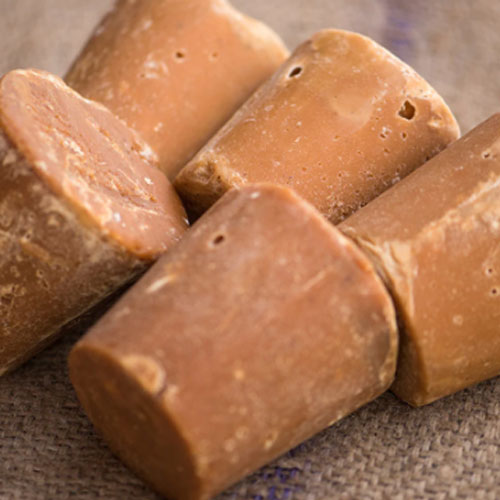
Jaggery, often referred to as "gud" in some regions, is a traditional non-centrifugal cane sugar widely consumed in South Asia, Southeast Asia, and parts of Africa and the Caribbean. It is made by boiling sugarcane juice or palm sap until it solidifies and then allowing it to cool and harden into blocks or cones.
Here are some key points about jaggery:
-
Natural Sweetener: Jaggery is a natural sweetener with a distinctive flavor that is often described as earthy, caramel-like, and slightly smoky. It is commonly used in cooking, baking, and beverages to add sweetness and depth of flavor.
-
Nutritional Content: Compared to refined sugar, jaggery retains some of the natural vitamins and minerals present in sugarcane juice, including iron, magnesium, potassium, and vitamins B1, B2, B3, and B6. However, it is still a concentrated source of calories and should be consumed in moderation.
-
Culinary Uses: Jaggery is used in a variety of dishes, both sweet and savory. It is commonly used in desserts, sweets, and confections, such as laddoos, halwa, and chikkis. It is also used to sweeten beverages like chai (tea), coffee, and traditional Indian drinks like sherbet.
-
Health Benefits: Some people believe that jaggery offers health benefits beyond those of refined sugar due to its mineral content. It is often used in traditional medicine practices for various purposes, including improving digestion, boosting energy levels, and treating coughs and colds. However, scientific evidence supporting these claims is limited.
-
Forms: Jaggery is available in various forms, including solid blocks, cones, granules, and powder. The form can vary depending on the region and the processing method used.
Overall, jaggery is a versatile and flavorful sweetener that has been used for centuries in traditional cuisines and remedies. Its unique taste and potential nutritional benefits make it a popular choice in many households worldwide.